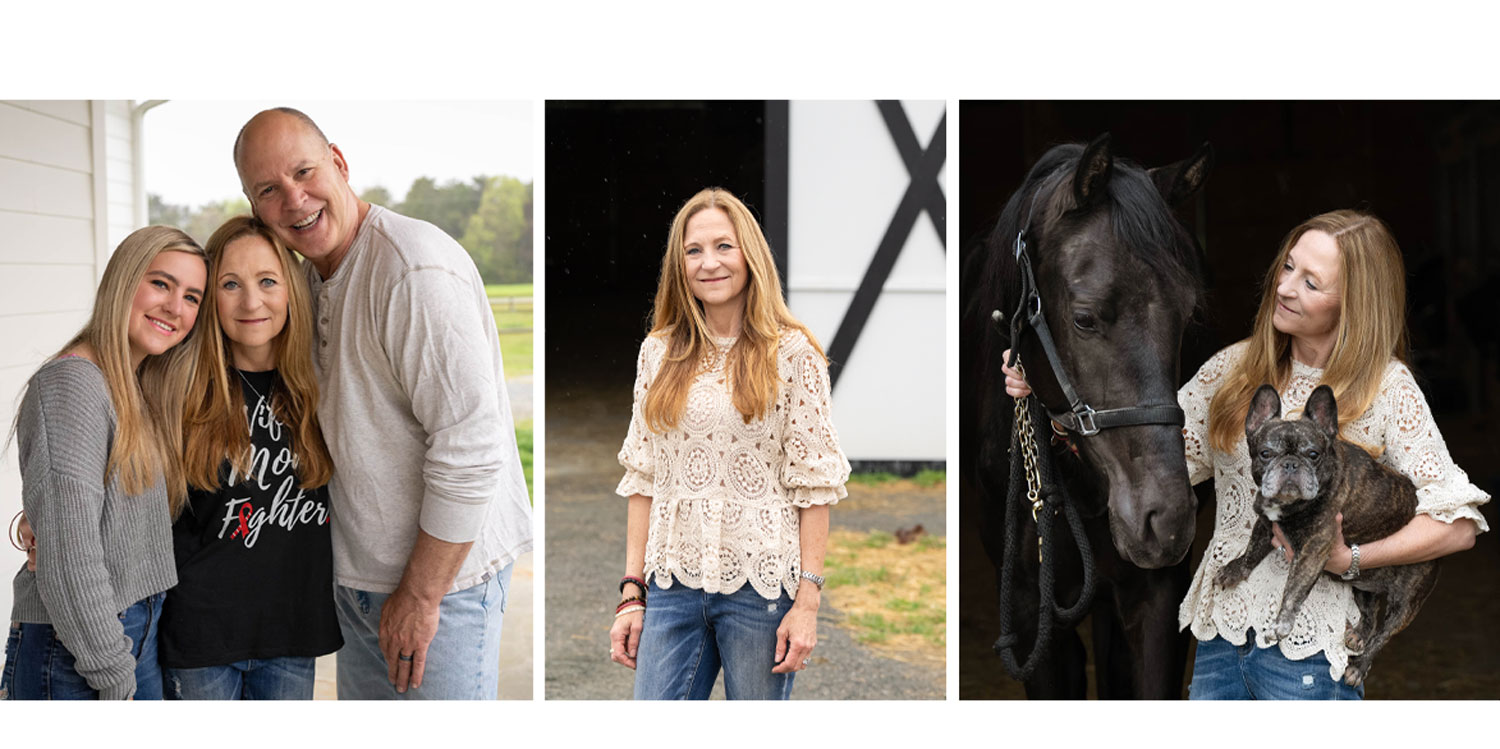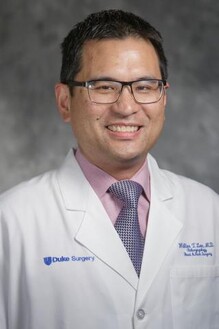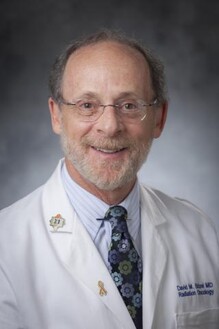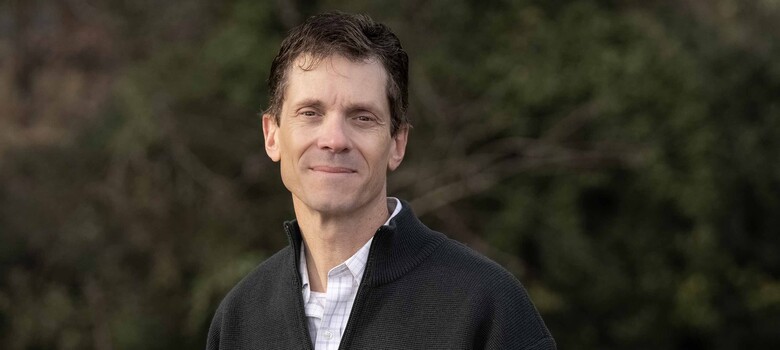Tonsil Cancer Diagnosis, Treatment, and All Clear in Less Than Six Months
Duke’s Head and Neck Cancer Team Tailors Treatment to Improve Outcomes

Kim Barnard holds her horse Johnny at her home in Roxboro, NC. Barnard said it was therapeutic to be able to heal around her horses and other animals.
When a suspicious lump in her neck wouldn’t go away, 52-year-old Kim Barnard learned she had cancer. The Roxboro, NC resident’s first move was transferring her care to Duke Health, where a team of head and neck oncologists worked quickly to confirm her diagnosis and begin treatment. After undergoing treatment, Barnard shows no evidence of cancer, is back to work, and is spending time with her beloved family, dog, and horses.
Swollen Lymph Node Prompts Action
In August 2023, Kim Barnard noticed a painless lump on the right side of her neck. After a couple of weeks passed with no change, she saw her primary care doctor who said the lump was a swollen lymph node, possibly due to a sinus infection. After a round of antibiotics, the lump remained. Next, Barnard saw an ear, nose, and throat specialist who prescribed another round of antibiotics plus a steroid. Neither had an effect. “I'm generally a healthy person, so when two rounds of antibiotics and prednisone weren’t doing anything, I knew something was up,” Barnard said. In mid-October, Barnard had a CT scan that identified the likely culprit: metastatic cancer. “It rocked me to the core,” she said. “At 52, healthy, and active, I wasn’t thinking about cancer.”
Heading to Duke
Barnard quickly transferred her care to Duke Cancer Institute and underwent a biopsy of her swollen lymph node. Results showed squamous cell carcinoma, a common type of head and neck cancer, that had spread from an unknown origin. One week later, Duke head and neck surgeon and surgical oncologist Walter T. Lee, MD, examined Barnard. “The signs were pointing to the primary tumor being in her right tonsil,” Dr. Lee said. The cause was human papillomavirus [HPV], a common virus responsible for up to 70% of cancers in the throat, base of the tongue, and tonsils. “The good news was that many types of tonsil cancers or oropharyngeal cancers are HPV-positive, and those have the best outcomes,” he said.
By the end of the appointment, Barnard said she knew she was in the right place. “Dr. Lee is confident, and I loved that about him, but he is also a person of faith. That put me at ease. I knew he was the right person for the job.”
A Team Approach to Cancer Treatment
Soon after, Barnard was on a plane heading to her stepson’s wedding in Mexico. By the time she landed, appointments were scheduled within days of her return to NC for a PET scan as well as appointments with radiation oncologist David Brizel, MD, and medical oncologist Neal Ready, MD. “All of us work with a sense of urgency,” Dr. Lee said. “We do whatever we can to move things along.”
Barnard’s case was presented to the head and neck tumor board -- a group of about 40 head and neck cancer experts -- to determine the best treatment course. “We’re always trying to balance what treatment or combination of treatments, whether its surgery, radiation, and chemotherapy, or just one or two of those options, will offer the best prognosis while limiting side effects,” Dr. Brizel said. “It's not just about getting rid of the cancer; it's also about preserving function afterward, and that's where expertise makes a big difference.”
Ultimately, Barnard and her team of doctors decided a combination of transoral robotic surgery (TORS) and radiation therapy was the best treatment plan. TORS is an advanced surgical approach. Surgeons use robotic, miniaturized tools to increase surgical accuracy and a camera inside the mouth to better visualize the target area.
Tonsillectomy and Lymphadenectomy
Barnard had surgery on December 1, 2023 -- one month and one day after her first appointment at Duke Health. Dr. Lee removed Barnard’s right tonsil, which housed the primary tumor, as well as the affected lymph node in her neck. Dr. Lee also proactively removed the left tonsil and nearby lymph nodes. After testing the tumor, results confirmed Barnard would need further treatment to reduce the chance of it returning. After five nights in the hospital, Barnard returned home. By the end of December, she was back at work.
Radiation Therapy
In mid-January 2024, Barnard began her radiation therapy regimen, five days a week for six weeks, under Dr. Brizel’s care. Side effects included intense mouth pain, which made eating difficult. Barnard stopped working after the first few weeks to focus on healing. She finished her last radiation treatment in late February 2024, and returned to work again in mid-March. She now has no evidence of cancer in her body, and she’s grateful to her Duke care team. “Duke was phenomenal,” she said. “My doctors worked closely together to make my experience better. Even the ladies who checked me in for radiation treatments and the valets, everybody just made it easy.”

Looking Ahead
Today Barnard is more optimistic than ever and is focusing on raising awareness. She recently became an ambassador for national nonprofit organization the Head and Neck Cancer Alliance. She also participates in social media forums about head and neck cancer and squamous cell carcinoma and shares her experience with people who are early in their cancer journeys. “Being an advocate is important, and I feel like I'm in a great position to do that,” Barnard said. “You have to speak up for yourself, and you can’t stop until you get answers.”
Learn More About





